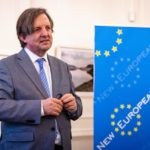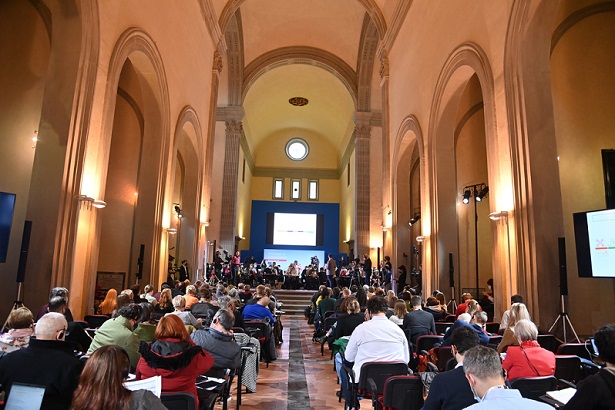At the first meeting of EU ambassadors of the New Year, the Conference on the Future of Europe (CoFoE) was not even on the agenda. As France currently holds the EU presidency and CoFoE was the brainchild of President Emmanuel Macron this was a surprising omission.
This may be a year in which the French President is seeking to renew his mandate. But the point about CoFoE is that citizens also need to have their voices heard between elections.
Should we be concerned at an apparent lack of interest on the part of EU leaders in what is probably the EU’s boldest ever democratic experiment? Or can we take encouragement from what has been achieved so far and draw a modest, albeit positive balance as the Conference reaches the mid-way point in its cycle of events?
What are the next steps in the process and is it too soon to start talking about the legacy of the Conference and what might happen next?
Dreams versus reality
To New Europeans, an organisation promoting a Europe of the citizens, CoFoE’s launch last June felt like Christmas had come had early. For the first time, the EU was embarking on a structured, citizen-led process which would engage transnational groups of citizens directly in EU policy-making.
For civil society groups like ours, it is difficult to resist the temptation to see the conference as an opportunity to call for all the EU reforms we have been campaigning on for years. But we also know that raising expectations of what can be delivered can undermine confidence and set the bar too high for what would qualify as a successful outcome.
In fact, the Conference needs to focus on engaging those citizens who have never heard the words Conference on the Future of Europe, or at least not necessarily in that order. It needs to show that it can deliver tangible outcomes even if these outcomes are relatively modest when compared with the dreams of pro-Europeans like us.
If that happens, then we will begin to see that the foundations really are being laid for what Dubravka Suica, the Commissioner for Democracy and Demography, who is leading the Commission's work on CoFoE, has referred to as “the emergence of a European public sphere”.
To achieve this, the role of all of us who care about the future of Europe should be to embrace this opportunity for dialogue and encourage the widest possible participation. The public can take part via the multi-lingual online digital platform set up by the three institutions, the Council, the Parliament and the Commission, which run the conference.
Over 4 million people have visited the platform and 40,000 have contributed online. This represents a significant increase on previous attempts to engage the European public. Additionally, panels of randomly selected citizens have been taking part in a series of meetings designed to identify and prioritise recommendations around the key issues.
These recommendations then go to a Conference plenary made up of appointees from the three institutions as well as a handful of representatives from civil society.
In mid-December, the final citizens panel met in Florence to debate and vote on recommendations on European democracy, values and rights, rule of law and security. Amongst the 39 recommendations approved by the panel was one calling for a legal obligation on the EU to hold regular Citizens Assemblies every twelve to eighteen months.
If implemented, such a proposal would come close to creating a permanent mechanism for direct citizen participation. It will not make all our dreams come true. But it would make the EU the world’s first democracy to institutionalise direct forms of citizen participation.
Outcomes versus processes
20 years ago, the EU’s answer to the challenges of the day was to ask a group of “founders” known as the European Convention to craft an elegant new constitution. This project was shipwrecked by referendums in the Netherlands and France. Real life is much messier than it may appear when we consider our common future in the abstract.
The lesson for today is to put the focus on outcomes and not on processes if we are to attract and hold the attention and the support of citizens for the long-term changes Europe needs. In the past, the EU has often succeeded where changes have been based on compromise and incremental reforms rather than radical transformation.
If it is to drive real change, then CoFoE, and any permanent mechanism for engagement that might become its legacy, must start from the real-life experiences of citizens.
It is clear, for example, that a stronger pan-European approach is needed in healthcare, both to ensure access to treatments as well as to minimise the economic impact of the pandemic. Many of the measures that are needed to combat climate change will require changes to behaviour and to lifestyles – how are these changes to be achieved?
What support do citizens need to best adjust to the digital revolution and the new world of work? How can we build a more inclusive and cohesive society in Europe?
Discussion of such practical issues will be much more meaningful to citizens than debates about the kinds of reforms that may or may not be need to the EU Treaties. That is not to say that process is unimportant. The changes needed to create a healthy, green, digital Europe may only be deliverable with significant reform of the EU’s institutions.
When European leaders set out to create the single market, they quickly realised that they needed to vastly expand the scope of qualified majority voting in the Council of Ministers.
We may need to transform the role and the powers of the European Parliament in order to create a European public space in the service of European democracy. The best way to do this is to treat reform as a means to an end rather an end in itself.
Institution-building versus participation
The Spinelli Group is the largest group of MEPs in the European Parliament. Founded in 2010, it was named after Altiero Spinelli who together with Ernesto Rossi co-authored the Ventotene Manifesto for a free and united Europe. The manifesto was written in 1941 in an Italian detention centre on the prison island Ventotene.
If Spinelli and Rossi were alive today, they would surely recognise that institution-building in Europe is far from complete. They would also notice the lack of citizen participation.
Citizens know it cannot be Christmas every day. They do not expect all the recommendations on their wish list to be taken up by policy-makers. Equally, if none of the proposals see the light of day, there is a danger that citizens will stop believing in the democratic process itself.
It is not clear at the moment, what will happen with the recommendations once they have been discussed and debated in the Conference plenary. However, it is hard to imagine what might be a bigger setback for the rise of deliberative democracy in Europe than a failure by the EU institutions to act on any of the proposals.
Whatever institutions we build in Europe will only be as strong as the culture of democratic engagement that underpins them. Participation brings energy, ideas and legitimacy to the democratic process and it needs to be as inclusive as it can be. This will take time, commitment, resources and patience.
That is the key lesson from CoFoE and the key to building a resilient democracy to underpin and sustain the European social model economy.


